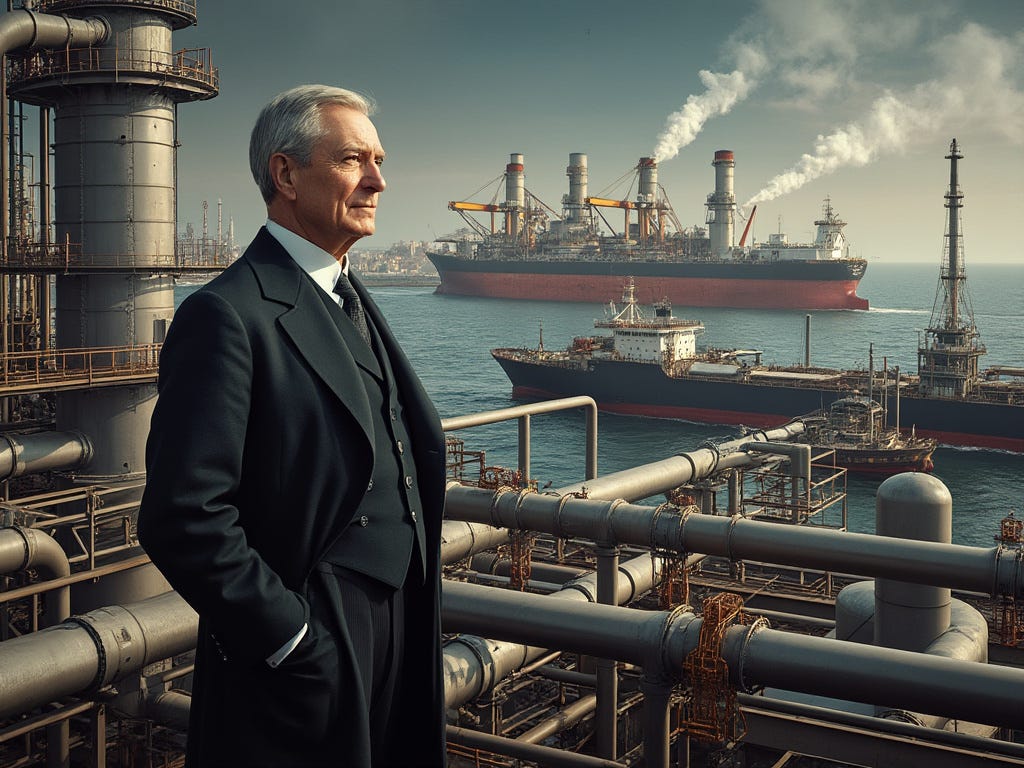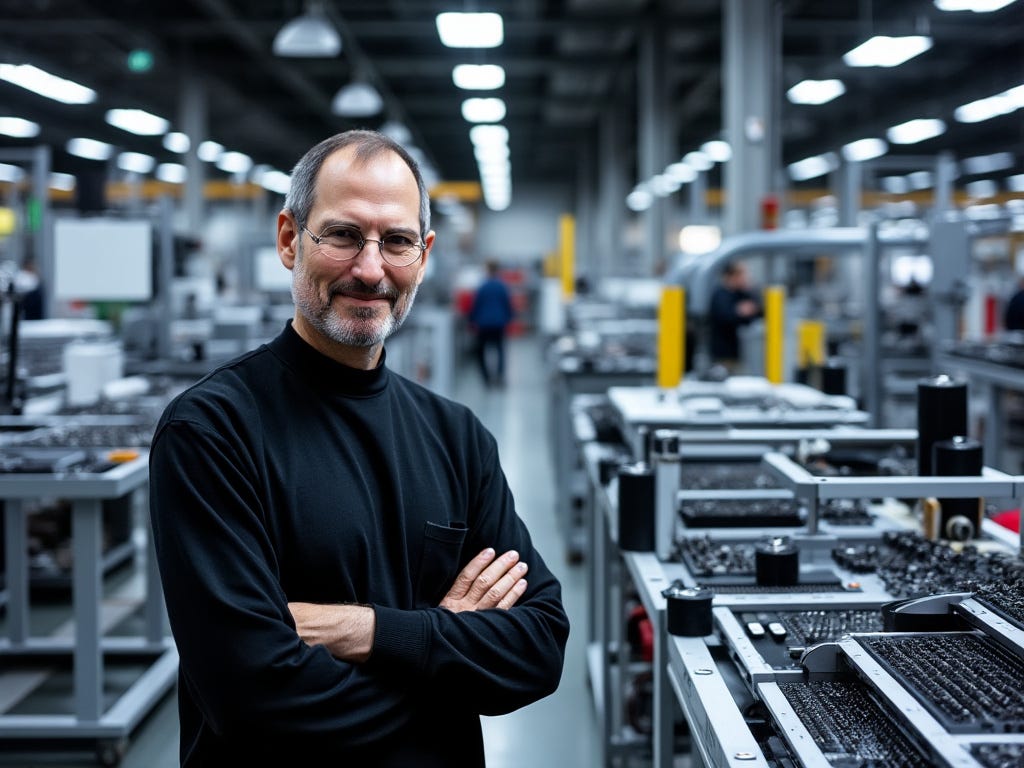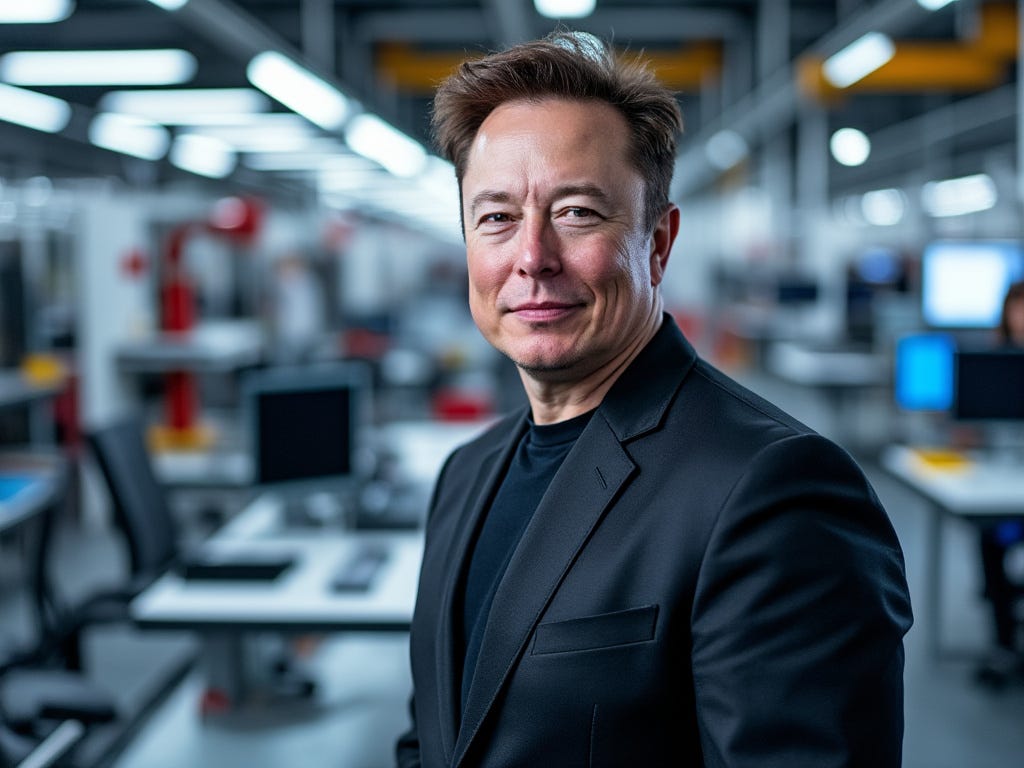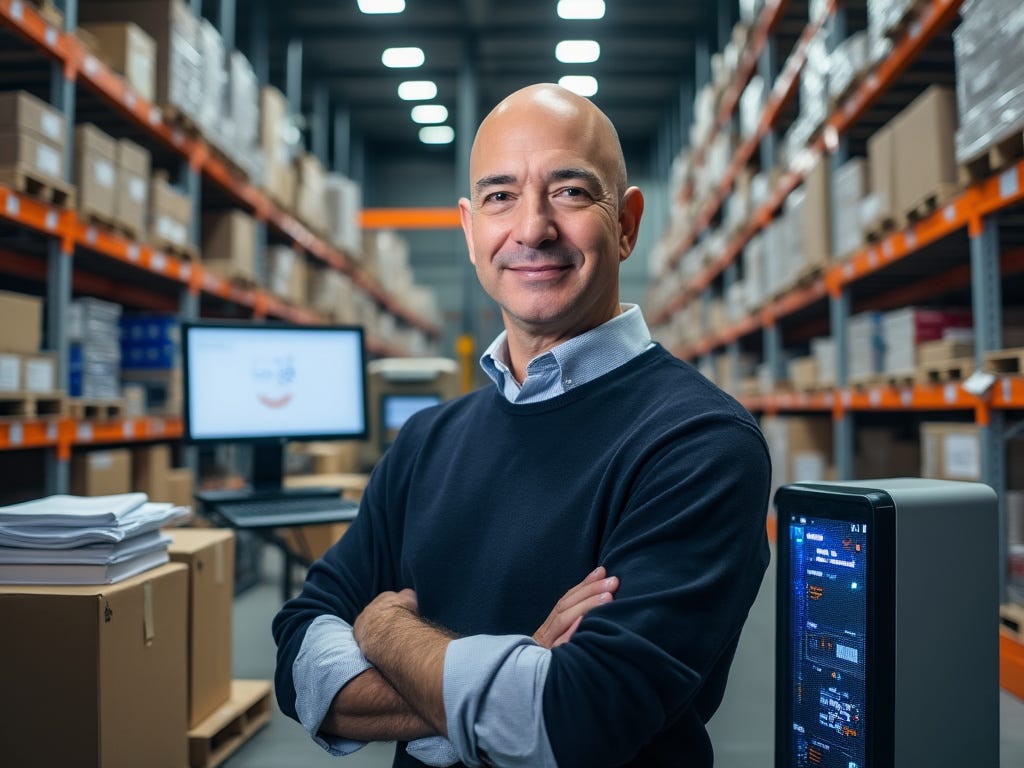Waves vs. Currents
Two Types of Founders & Opportunities: How to Capitalize!
Glad you’re here 👋 ,
In this publication, Can't Fail, I won’t offer a typical “business analyst” perspective. Plenty of those publications already exist, detailing strategies, tactics, & business structures.
I classify those publications as "How to Succeed," which is the opposite side of the coin from Can't Fail. After all, plenty of companies, founders, & CEOs have failed despite having enormous war chests, brand superiority, a decades headstart, with strong & talented teams.
I'm not interested in "How to Succeed."
I'm obsessed with Can’t Fail.
This gets into the discussion of Waves vs. Currents.
If you don't understand the difference, you'll try building a Current business on a Wave opportunity, or visa versa, while continuing to struggle, fail, & lose, & not understand why.
Waves move fast & are hard to catch. If you've never surfed, I encourage you to grab a surfboard, paddle out, & attempt to catch a wave. Most likely, you'll be exhausted by the time you get out there. Then, either get punished by, or miss the fast-moving waves repeatedly.
Currents, on the other hand, are the forces that move beneath the surface waves. They’re always there, working, but nobody sees them. Similar to the jet stream 30,000 ft. above the earth's surface, where the only indication it exists is the clouds we see floating by.
You don't have to work to catch the current or jet stream. It catches you.
In the context of the environment, there are two kinds of currents:
Surface currents & deep water currents. Surface currents are created by the wind & shit (...yes, that's a technical term). If the wind blows west, the surface water moves west. This is how hurricanes create storm surges. Their wind pushes the water. Deepwater ocean currents, however, differ from surface currents. They're the continual, directional, & predictable movement of seawater driven by gravity & water density.
Unlike wind affecting surface currents, which may or may not blow today. Deep ocean currents never stop.
You can think of ocean currents as the "lazy river" at your favorite resort. You grab your inner tube, plop your ass in, & while holding your beer, the current pushes you in a predictable direction.
This is how The Great Pacific Garbage Patch is formed in the Pacific Ocean between Hawaii and California, estimated to be 3X the size of France. Predictable whirlpools drive the accumulation of trash.
In business, deep water currents exist, too. These are macroeconomic trends.
Once you identify & understand them, as a founder, company, CEO, your economic model, product line, marketing messages, etc, can be designed to ride them (as effortlessly as floating in a lazy river) as opposed to not knowing they exist & frantically attempting to fight against them.
In the context of business:
Waves are fast-moving surface currents, popular trends, fads, & rapidly changing innovative technologies.
Waves, like Hurricanes, create headlines & grab attention. Everyone is talking about them at once. Like the "HawkTua Girl," they go viral quickly. They burn bright, hot, & fast. If you blink, you miss the opportunity to capitalize on the rapidly evaporating ground floor opportunity.
When ChatGPT launched, it's what everyone talked about. Overnight everyone became an AI expert. This launched a wave of ill-conceived "AI" startups that failed almost immediately despite, in many cases, raising millions in funding because the technology advanced too rapidly.
The bigger the wave, the faster it moves. And thus, the more skill, manpower, & capital you need to ride it. There's a reason big wave surfers are the best in the world, get towed in by jet skis, & depend on their safety team to support them.
Without these things in place: elite skills, a war chest of capital, & a world-class team; founders, companies, & CEOs trying to catch waves end up missing them or get pummeled by them.
Currents are different. They don't move fast. They unfold slowly & are cyclical for decades and centuries.
History repeats.
Human behavior never changes.
Macroeconomic trends are cause & effect, but due to the slowness in which shit unfolds, even the smartest minds struggle to connect the dots. A stimulus today leads to inflation 3 years from now.
Consider:
America is on the brink of a profound economic crisis as inflation, debt, & unemployment due to automation continue to converge. The middle class, once the bedrock of U.S. society, is at risk of collapse. In 2023, 60% of Americans reported living paycheck to paycheck, a sharp increase from previous years due to inflation, according to a Bloomberg report. Rising costs have cut household purchasing power, with inflation driving monthly household costs up by more than $400. Wages have not kept pace with the soaring prices of food, gas, & housing, pushing many middle-income families toward financial ruin .
Housing affordability is plummeting. Median home prices in the U.S. have increased by over 20% since 2020, & mortgage rates have surged to their highest levels in over two decades, hitting 8% in 2023, according to The Wall Street Journal. Meanwhile, rental costs have jumped by 17%, adding to the burden. Housing, long seen as a financial anchor for middle-class families, has become inaccessible for millions, with experts from Barron’s warning that homeownership rates are likely to decline as costs continue to outstrip income growth.
Crime rates are rising, adding to societal instability. Major cities across the U.S. have seen significant increases in violent crimes, with NY Times reporting a 30% spike in homicides from 2019 to 2021. As inflation worsens, this trend is expected to continue, with social unrest growing among those most affected by economic hardship.
The U.S. debt problem is unsustainable. With a national debt of $35 trillion & projections of another $22 trillion in deficit spending over the next decade, America is on track to surpass debt levels not seen since the aftermath of World War II, according to the Congressional Budget Office (CBO). The Wall Street Journal warns that if the bond market falters, the U.S. government could struggle to find buyers for its debt, resulting in higher interest rates, even more borrowing, & the risk of default. In the worst-case scenario, this will lead to a collapse of the U.S. dollar & a full-blown economic crisis.
Job losses due to automation are looming on the horizon. A report by McKinsey estimates that 25% of American jobs could be displaced by automation by 2030, with industries like retail, manufacturing, & logistics facing the largest impact. Goldman Sachs predicts that 300 million jobs worldwide could be automated by AI technologies, with the U.S. particularly vulnerable. Already, companies are rapidly adopting AI & automation to reduce costs, leaving millions of low- & middle-income workers at risk of unemployment. Bloomberg reports that tech companies are scaling up AI capabilities at an unprecedented pace, further accelerating this shift.
Loan defaults and bankruptcies are becoming a major concern. While the stock market rises & gives an illusion of prosperity, the real economy is telling a much darker story. Large corporations—those with $100 million or more in assets—are seeing bankruptcy rates soar. According to recent data, the default rate among these corporations has surged by 8% this year, now standing 43% above the average from 2005 to 2023. This sharp increase signals significant distress within major sectors, including retail, energy, and real estate, which have been particularly vulnerable to inflationary pressures and rising interest rates.
Small businesses—the lifeblood of local economies—are also struggling. The National Federation of Independent Business (NFIB) reports that 17% of small firms saw a decline in sales in September, the highest percentage since the COVID-19 pandemic and levels last seen during the Great Financial Crisis. Sluggish consumer spending, rising operational costs, & inflation have left many small business owners unable to cover basic expenses, forcing worker layoffs or closure entirely.
What can we conclude:
The convergence of inflation, job displacement, & rising debt will leave millions of Americans struggling to maintain their standard of living. As The New York Times and The Wall Street Journal have pointed out, the U.S. economy is heading toward uncharted territory, where unchecked debt, automation, & inflation could lead to deep societal fractures.
Financially, a Society Divided.
Resulting in extreme financial hardship & suffering for many. And extreme financial wealth & prosperity for others.
This is inevitable.
These macroeconomic outcomes are Currents. They don't happen all at once, nor is every societal segment affected the same. But much like deep ocean currents, which drive the accumulation of trash to predictable locations, macroeconomic outcomes are cause & effect, too. You can accelerate or delay them, i.e., government manipulation), but you can’t stop them.
Further, they are cyclical.
Nobody thought the Roman Empire could fall, but it did, as did many Empires before the Roman Empire. Humans are quick to forget the lessons learned; thus, history repeats.
Most believe it’s impossible for the U.S. dollar to collapse & lose its world reserve status. However, the history of "fiat currencies" tells a different story. Not only is it possible, it's probable.
Hindsight is 20/20
To predict the future, study the past.
In Summary, Waves vs. Currents
Waves, in my experience, are exciting high-stakes opportunities that, due to their fast-moving nature, either make you rich quickly or crush you painfully.
To "catch" Waves, you need 5 things:
Elite Level Skills
Perfect Timing
Lots of Capital
Extremely Talented Team
Lots of Luck
Have you ever watched a surfing competition where 77 surfers try to drop into the same wave? It doesn't end well. Or perhaps your mind conjures a different image, like my mind does, of the annual "cheese rolling competition" in Gloucestershire, England.
This is what founders, companies, CEO's trying to capitalize on Waves looks like:
(Chasing the cheese; the first one to the bottom wins)
Most people aren't wired to win this kind of race. They're too risk averse, like me, & say, 'Fuck that.' Even if you win, the chances of ending up broken are high.
People who succeed at riding 100-foot waves, the equivalent of 10-story office buildings, moving at 40 mph, carrying 150,000 ft. pounds of impact, are what risk-averse people call "insane people." Every year, some of the best in the world at their sport die doing what “they loved to do.”
Pushing the limits
High stakes, high rewards
Chasing adrenaline
The risks & stakes required to catch Waves are beyond what any regular person deems acceptable. In their wiring, they simply aren't that person, so they miss every wave (too cautious, too hesitant), resulting in failure after failure, attempt after attempt. All the while wondering, & scratching their head, "Why can't I succeed as these other founders, companies, CEOs do?"
Answer:
You have to match your personality to the sport.
Remember that Lazy River? "Grab your inner tube, plop your ass in, & while drinking your beer, it pushes in a predictable direction." Yes, you recall me saying that?
To "ride" Currents, you need 4 things:
Foresight
Patience
Discipline
Efficiency
The critical understanding here is that you don't win by getting there first. You win by building the most efficient system. Amazon was not the first company to sell books. Far from it. Bezos, in his mind, was never a bookseller. He was a single-product e-commerce platform that would, over the next 20 years, become the most efficient system in the world for selling online. The internet & e-commerce were Currents Jeff recognized & rode. He didn't chase them. He didn't have to. Currents push you, or people, i.e., large segments of potential customers, just like trash in the ocean, to predictable future locations.
(This is where those 4 characteristics to capitalize on Currents come into play & are of critical importance)
Examples of founders, companies, & CEOs riding currents:
John D. Rockefeller – Oil Industry
Foresight: Rockefeller saw the immense potential in oil refining, recognizing that oil would become a critical commodity for industry and households.
Patience & Discipline: Instead of rushing to dominate oil production, Rockefeller focused on efficiency in oil refining and distribution. He perfected cost-cutting methods, reduced waste, and developed standardized processes to refine oil more efficiently.
Efficiency: Rockefeller’s Standard Oil didn’t just process oil—it built an infrastructure of pipelines, storage facilities, and shipping networks that allowed it to distribute oil more efficiently than competitors. This system gave Standard Oil such a competitive edge that it eventually controlled over 90% of the U.S. oil market.
Lesson: Rockefeller wasn’t the first in oil, but he created the most efficient and scalable system for refining & distribution, which enabled him to dominate the market.
Henry Ford – Automobile Industry
Foresight: Ford saw the potential for automobiles to replace horse-drawn carriages, but he also knew that cars needed to be affordable for the masses to drive widespread adoption.
Patience & Discipline: Ford spent years refining his manufacturing processes, introducing the assembly line in 1913. This allowed him to produce cars at an unprecedented scale while reducing costs dramatically.
Efficiency: Ford didn’t invent the automobile, but his assembly line made cars affordable for average Americans. By optimizing production efficiency, Ford reduced the time it took to build a car from 12 hours to 1.5 hours, allowing him to slash prices and put millions of people behind the wheel.
Lesson: Ford didn’t rush to market with a luxury vehicle; he took the time to build the most efficient manufacturing system, which transformed society by making cars accessible to the masses.
Steve Jobs – Apple
Foresight: While other companies were focused on improving existing products, Jobs saw that the future lay in integrating design, software, and hardware in a seamless user experience. His foresight was evident in his vision for products like the iPhone, which merged multiple technologies into one device.
Patience & Discipline: Jobs spent years developing the iTunes ecosystem before launching the iPhone. This ecosystem gave Apple control over the digital music market and provided a foundation for the App Store, which would later be central to the iPhone’s success.
Efficiency: Apple wasn’t the first to create MP3 players, smartphones, or tablets, but Jobs perfected the ecosystem around these devices, making them indispensable. Apple’s closed-loop system made the experience efficient and elegant, ensuring users would stay within the Apple ecosystem.
Lesson: Jobs didn’t need to be the first in mobile phones or music players—he built the most user-friendly and efficient system for these products, ensuring Apple’s continued dominance.
Elon Musk – Tesla
Foresight: Musk recognized the potential of electric vehicles (EVs) long before they became mainstream, seeing them as the future of sustainable transportation.
Patience & Discipline: Tesla didn’t launch with a mass-market vehicle but instead started with the high-end Roadster to prove that electric cars could be desirable. Over the next decade, Tesla gradually worked toward developing more affordable models like the Model 3, which took years of refining manufacturing processes.
Efficiency: Tesla’s breakthrough wasn’t just in making electric cars, but in creating an efficient battery production system and vertically integrating its supply chain—from battery production (Gigafactories) to software integration (Autopilot). This approach helped Tesla dominate the EV market while others struggled with scalability.
Lesson: Musk didn’t rush to make Tesla the first affordable electric car. Instead, he focused on building the most efficient production and supply chain, ensuring Tesla’s eventual dominance.
Jeff Bezos – Amazon
Foresight: Bezos recognized the internet’s potential for e-commerce before many others. However, instead of focusing solely on being first, he invested in building a scalable infrastructure.
Patience & Discipline: Amazon began by selling books online, but Bezos didn’t stop there. He spent over 20 years building the logistics, delivery, and data systems that would allow Amazon to become a retail giant across multiple industries. He continuously reinvested profits into expanding operations rather than chasing short-term gains.
Efficiency: Amazon’s massive success comes from its logistics and fulfillment network, which is so efficient that it can deliver products to consumers faster and cheaper than competitors. This infrastructure, combined with innovations like Amazon Web Services (AWS), has made Amazon the leader in both e-commerce and cloud computing.
Lesson: Bezos didn’t aim to be the first e-commerce site; instead, he built the most efficient and scalable platform for selling anything online, ensuring Amazon’s dominance across multiple industries.
Of course, not everybody will become a Rockefeller, Ford, Jobs, Bezos, or Musk. And that isn't my point for dissecting Waves vs. Currents.
Can't Fail starts with knowing the personality of the founder, company, or CEO, then matching that "personality" to a Wave or Current opportunity.
Travis Kalanick, by sheer will, drove Uber's early success. He is without a doubt a 100-foot wave surfer.
For every Travis, there are thousands of wannabes who wish they were but aren't.
Me?
I'm not a “Travis Kalanick.”
I don't catch waves.
I ride currents.
Interestingly enough, in Travis’s second act, in building CloudKitchens, he’s riding a current. Not chasing a wave.
It's critical to understand this about ourselves as well as the founders, companies, & CEOs, that we might invest in. Additionally, those who go the fastest are rarely the ones who go the furthest.
Can we be/find both?
Sure.
But there's a better chance of getting hit by lightning.
Thanks for reading,
Remember, if your Character fails in life, it's because you wrote for your Character a shitty script
You have nobody to blame but you!
-FLETCHER
Subscribe to Can’t Fail by Ryan Fletcher







